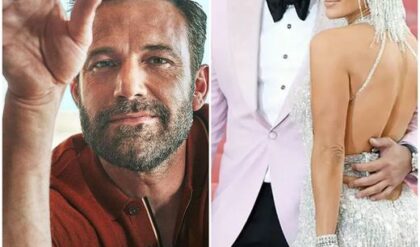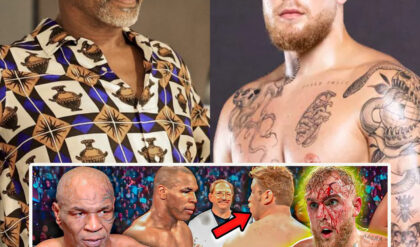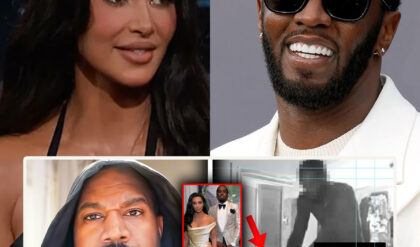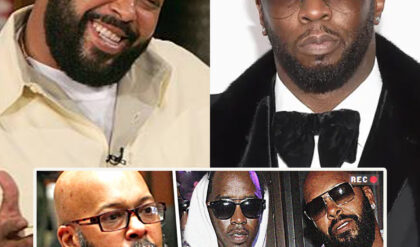The NBA has deployed remote cameras above the court to capture Victor Wembanyama’s highflying plays near the hoop.
The first thing Michael Anthony Gonzales did was buy a step ladder.
For the 5-foot-6 photographer, whose job suddenly revolved around shooting Victor Wembanyama, the San Antonio Spurs’ 7-foot-4 phenom, boosting his line of sight was one of many necessary adjustments. Before long, Gonzales had acquired extra-tall, 13-foot studio backdrops to fully surround the French center and had switched to a wider-angle 28-300 millimeter camera lens to better accommodate Wembanyama’s 8-foot wingspan. When the NBA’s regular season began, Gonzales deployed a remote camera in the backboard to ensure he didn’t miss a dunk or block, angling the lens so both sides of the rim were covered just in case.
Gonzales’s equipment tweaks were only one aspect of what he calls the “Wemby effect.” During the Spurs’ highly anticipated media day in October, a pack of reporters swarmed his photo stations for a glimpse at the rookie. As Gonzales worried about the onlookers tripping over his cables and lights, his assistant was so overwhelmed by Wembanyama’s presence during a shoot that he kept fumbling simple passes from the 2023 No. 1 draft pick. Thankfully, Wembanyama broke the ice by laughing.
“That morning was one of the most nervous moments of my life,” said Gonzales, who has worked for the NBA for 13 years. “I’ve shot so many media days, but this was one where all eyes were on me. This is a big-time situation. These are photos that are going to be in history forever. The night before, I probably got an hour and a half of sleep. You don’t want to sleep through your alarm. I made sure I got up, got my coffee and just took a couple of breaths. I told myself: ‘You’ve done this before. You’ve got this.’ ”
In the five months since, Gonzales’s pictures of Wembanyama have appeared on billboards in Texas, the cover of “Slam” magazine, the pages of “Sports Illustrated” and in countless media outlets around the world. From his floor seat along the baseline at Frost Bank Center, the 37-year-old photographer has become a key cog in the NBA’s buzzing Wembanyama content machine, which operates around-the-clock and with split-second efficiency to feed an insatiable audience.
Though the rebuilding Spurs sit in the Western Conference basement and play in one of the NBA’s smaller markets, Wembanyama has rocketed to the top of the league’s charts in terms of fame and visibility. The 20-year-old rookie has generated 1 billion video views on the league’s social media accounts this season — trailing only Stephen Curry and LeBron James — and his “Space Jam” dunk against the Boston Celtics in late December garnered a record 154 million views on the NBA’s Instagram account, according to league data. Wembanyama ranks first in jersey sales in Europe and fourth overall, and he was recently signed by Louis Vuitton as a brand ambassador. The Spurs have been the most-watched team in France this season, and San Antonio’s local television ratings increased 57 percent year-over-year through the first half of the 2023-24 season.
“He’s a phenomenon in terms of his popularity and appeal,” said George Aivazoglou, the NBA’s head of fan engagement in Europe and the Middle East. “Across all data points — the fan engagement side, content side and commercial side — he’s had a tremendous impact. Less than six months into his first season, he’s become a global household name.”
NBA photographer Michael Gonzales had to hop on a ladder to shoot Spurs rookie Victor Wembanyama on media day in October.
How viral happens
While Wembanyama’s unprecedented combination of size and skill has taken the basketball world by storm, the NBA was well positioned to capitalize on his potential. The league’s list of international stars dates back decades and includes Dirk Nowitzki, Yao Ming, Giannis Antetokounmpo and Nikola Jokic, while buzzy teen sensations such as James and Zion Williamson have long fomented significant pre-draft interest. The NBA wasted no time identifying Wembanyama’s pull, chumming the waters for his stateside arrival by airing his French league games on its app throughout the 2022-23 season.
Meanwhile, the NBA has long prioritized digital engagement as a way to reach its fan base, which skews younger and more international than the other major North American professional sports leagues. That focus has required expanding and refining its internal infrastructure to deliver photos and videos to the league’s followers, business partners and media outlets.
“We have a scaled and global social media production team that works nonstop, day in and day out, to capture and share moments in real time to hundreds of millions of fans,” Aivazoglou said. “It’s not a simple operation to build, but we built it very well. It operates in a very seamless way, and we’re getting instant responses.”
The NBA assigns one or two photographers, such as Gonzales, to each game, asking them to document everything from the players’ fashionable outfits when they arrive at the arena to their postgame reactions. Joe Amati, the vice president of NBA Photos, and his staff create content plans to guide the photographers, noting key matchups or major storylines such as Wembanyama’s rookie of the year push. Recently, Wembanyama’s five-by-five stat lines — when he records at least five points, rebounds, assists, steals and blocks in a single game — prompted Amati to hold a team meeting to share “scouting reports” for capturing a blocked shot at the precise moment the defender’s hand touches the ball.
Victor Wembanyama’s full-extension blocked shot attempts have repeatedly gone viral on social media during his rookie season.
During games, NBA photographers shoot with two cameras: one with a shorter lens for the near-court action and a second with a variable lens once the gameplay heads toward the far basket. To add additional angles for highlight plays, the photographers also operate remote cameras that are placed in the backboard, in a cutout at the base of the basket stanchion and above the hoop from an overhead position. On a typical night, an NBA photographer shoots as many as 2,000 photos.
To ensure maximum quality and minimal delays, on-location photographers physically connect their cameras to the NBA’s high-speed data network using a router in the basket stanchion, which allows them to automatically transmit their pictures to a server that can be accessed by the league’s remote editing operation in Secaucus, N.J. There, as many as a dozen editors — one for each game — process photographs within seconds after they are snapped, working as late as 2 a.m. to cover games that take place on the West Coast. Editors cull through the raw batch looking for images that might be of immediate interest to the teams, using SharePoint folders to distribute them internally and Slack to communicate requests to the photographers.
As the night unfolds, each editor gradually selects the best images based on their composition, sharpness and timing, among other attributes. One hundred to 175 images will be cropped and color corrected, if necessary, before being sent to Getty Images, the league’s international distribution partner, where they can be viewed and downloaded by licensed media outlets.
The NBA makes a point early in the season to build up a large photo inventory of rookies, recently traded players and other newsworthy subjects, so Amati took the unusual step of sending Hall of Fame photographer Andy Bernstein, who is based in Los Angeles, to shoot Wembanyama in San Antonio and Portland.
“The business of basketball needs photography to function,” Amati said. “They’re making trading cards, licensed products, [banners in] different spots around the arena, billboards, season ticket materials. For us, it was common sense to devote resources to Victor.”
Now that the initial rush has subsided somewhat, Wembanyama might feature in 20 widely distributed photographs during an average game, more if he is involved in a high-profile matchup such as his recent showdown with fellow rookie of the year candidate Chet Holmgren of the Oklahoma City Thunder. Of course, lightning bolt moments — such as when Wembanyama blocked a Holmgren jump shot to close out a Feb. 29 win — cause editors to drop everything and immediately route the images to the league’s social media teams. Gonzales said he has seen his photos of Wembanyama’s highlights spreading online “within one minute” after he pressed the shutter button.
“It’s an amazing feeling when you nail a shot and it gets released to the world,” Gonzales said.
A remote camera placed in the backboard shows a dunking Victor Wembanyama close to eye level with the rim.
Wembanyama the subject
Like any great muse, Wembanyama’s appeal reaches across the emotional spectrum. Gonzales was drawn to Wembanyama’s preference for “moody and dramatic” portraits, and his favorite shot features a pensive Wembanyama with his eyes closed clutching a ball. Amati prefers Wembanyama’s “wonderful, genuine smile,” which he seemingly can’t contain after San Antonio’s wins. Aivazoglou has enjoyed the supersized moments, such as when the NBA placed life-size Wembanyama cardboard cutouts in Paris so “mere mortals” could gawk at his dimensions.
Bernstein, who has photographed Magic Johnson, Michael Jordan, Kobe Bryant and James during his 43-year career, felt the pull of Wembanyama’s range of skills — ballhandling, shooting, shot-blocking — and spontaneity.
A pensive Victor Wembanyama poses with a basketball on Spurs media day.
“I have to learn a whole different way to shoot this guy, just like I had to learn to shoot Magic and Michael,” Bernstein said. “I had no idea what Magic was going to do on the fast break and I got burned a lot early in my career. Michael was a little more predictable going to the rim, but I had to learn to get the pinnacle of the dunk. Showing [Wembanyama’s] full length and keeping all of him in the frame is very challenging. Honestly, that gets my juices flowing.”
Popular subgenres have emerged within the huge and growing body of Wembanyama photographs. Gonzales points to photos of Wembanyama reaching out at full extension to block or challenge jump shots, dwarfing his opponents in the process. Bernstein notes how low-angle shots from the bottom of the stanchion make it look as if Wembanyama isn’t even jumping when he dunks. And Amati instructs his charges to seek out cross-generational moments, such as when Wembanyama jokes with the 39-year-old James or receives pointers from legendary Spurs coach Gregg Popovich.
Many of the recurring memes trace back to stature: Wembanyama towering over opponents and teammates in side-by-side shots; Wembanyama gazing down into the rim; Wembanyama ducking under doorways and metal detectors; Wembanyama making a basketball look like a volleyball in his huge hands. To reinforce the persistent theme, Aivazoglou suggested the league should commission photographs of random fans draped in Wembanyama’s overlong jerseys.
As rabid as the interest has been to this point, grander stages await at this summer’s Paris Olympics, where Wembanyama is expected to play for France, and the NBA playoffs, once the Spurs’ rebuilding effort shows progress. After meticulously tracking Wembanyama’s every move, through zoom lenses and from five angles, Gonzales is convinced his subject is ready for whatever the future holds.
“When you see Wemby all the time, you realize he’s really serious and that winning is his passion,” he said. “He loves the sport more than the attention.”
Even though he is only a rookie, Victor Wembanyama ranks first in jersey sales in Europe and fourth overall.
Hot news:
Hot news:
News
Test đẩy bài từ cms
Test đẩy bài từ cms, xóa sau khi dùng.
BREAKING: NFL Unanimously Votes In New Controversial Rule
(Photo by Ethan Miller/Getty Images) The NFL seems to be destined to ban the hip-drop tackle this week. The league office wants to ban a certain type of hip-drop tackle. The NFLPA disagrees. The owners voted on it. On Monday, it was…
Everyone Noticed The Same Strange Thing About This Year’s NFL Coaches Photo
Fans had questions after five NFL head coaches missed out on the league’s annual photo this week. Most of the coaches are in Orlando, Florida at the moment as the NFL annual owners meeting is taking place there. So they came together…
5 Most Overrated NFL Free Agent Signings Of 2024 So Far…And 5 Most Underrated That Are Flying Under The Radar
Now that most of the top 2024 NFL free agents are off the board, it’s a good time to look at which highly-anticipated signings are bound to disappoint — and which under-the-radar moves will pay more dividends than you think. So with…
Ranking The Craziest NFL Free Agent Deals Of All-Time From WORST To FIRST
Free agency completely changes the landscape of professional sports. When a player’s contract is up—he can go to any team and drastically alter the balance of power in the league. The NFL is no different. All it takes is one crazy deal…
BREAKING: AFC Super Bowl Contender Has Officially Made A Contract Offer To Odell Beckham Jr.
The Miami Dolphins have some interest in veteran playmaker, Odell Beckham Jr. Miami Dolphins coach Mike McDaniel spoke to reporters about the team’s early offseason at the NFL annual meeting Monday at the Ritz-Carlton Grande Lakes and informed everyone that the Dolphins and Odell Beckham Jr….
End of content
No more pages to load






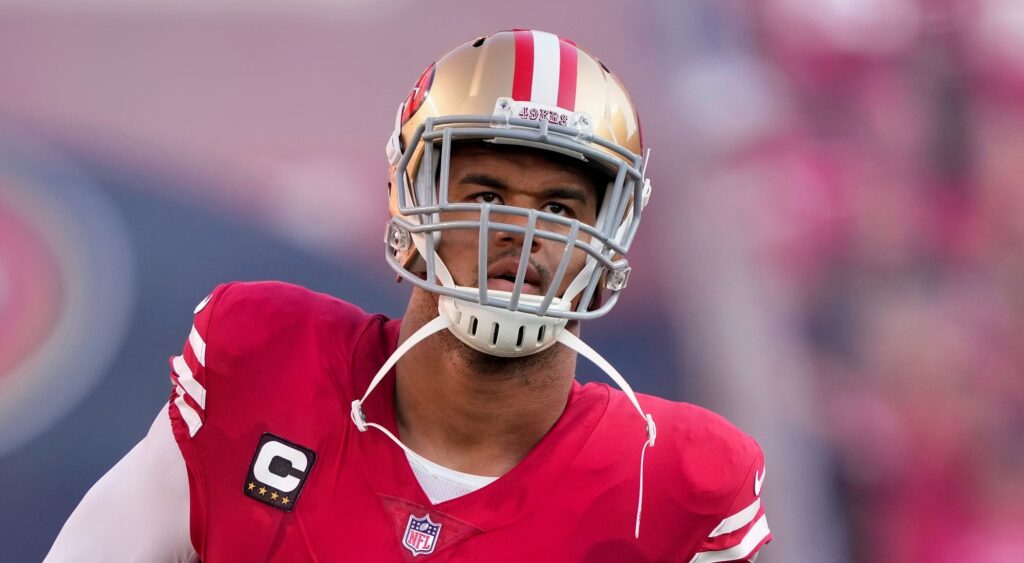 SANTA CLARA, CALIFORNIA – SEPTEMBER 21: Arik Armstead #91 of the San Francisco 49ers takes the field prior to the game against the New York Giants at Levi’s Stadium on September 21, 2023 in Santa Clara, California. (Photo by Thearon W. Henderson/Getty Images)
SANTA CLARA, CALIFORNIA – SEPTEMBER 21: Arik Armstead #91 of the San Francisco 49ers takes the field prior to the game against the New York Giants at Levi’s Stadium on September 21, 2023 in Santa Clara, California. (Photo by Thearon W. Henderson/Getty Images)




